

Sip and Sensibility
Copyright © 2024 by Cider Mill Press Book Publishers LLC.
This is an officially licensed book by Cider Mill Press Book Publishers LLC.
All rights reserved under the Pan-American and International Copyright Conventions.
No part of this book may be reproduced in whole or in part, scanned, photocopied, recorded, distributed in any printed or electronic form, or reproduced in any manner whatsoever, or by any information storage and retrieval system now known or hereafter invented, without express written permission of the publisher, except in the case of brief quotations embodied in critical articles and reviews.
The scanning, uploading, and distribution of this book via the internet or via any other means without permission of the publisher is illegal and punishable by law. Please support authors’ rights, and do not participate in or encourage piracy of copyrighted materials.
13-Digit ISBN: 978-1-40034-399-7
10-Digit ISBN: 1-40034-399-2

This book may be ordered by mail from the publisher. Please include $5.99 for postage and handling. Please support your local bookseller first!
Books published by Cider Mill Press Book Publishers are available at special discounts for bulk purchases in the United States by corporations, institutions, and other organizations. For more information, please contact the publisher.
Cider Mill Press Book Publishers “Where Good Books Are Ready for Press” 501 Nelson Place Nashville, Tennessee 37214
cidermillpress.com
Typography: Dico Typewriter, Evalfey Variable, Warnock Pro
Printed in Malaysia
24 25 26 27 28 OFF 5 4 3 2 1
First Edition

An Inspired Literary Cocktail Collection
Illu strations by Adèle Leyris
TIM RAYBORN

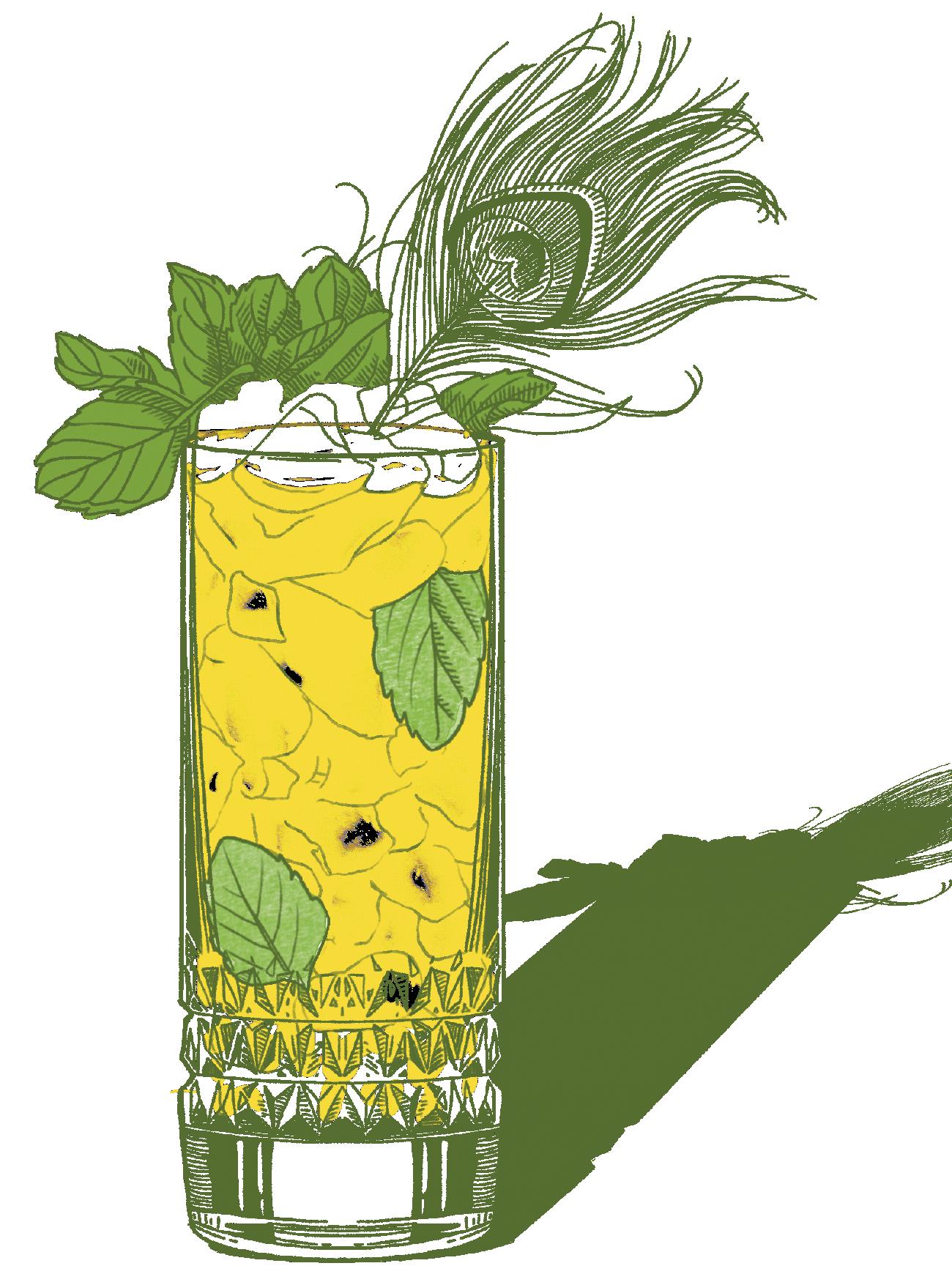

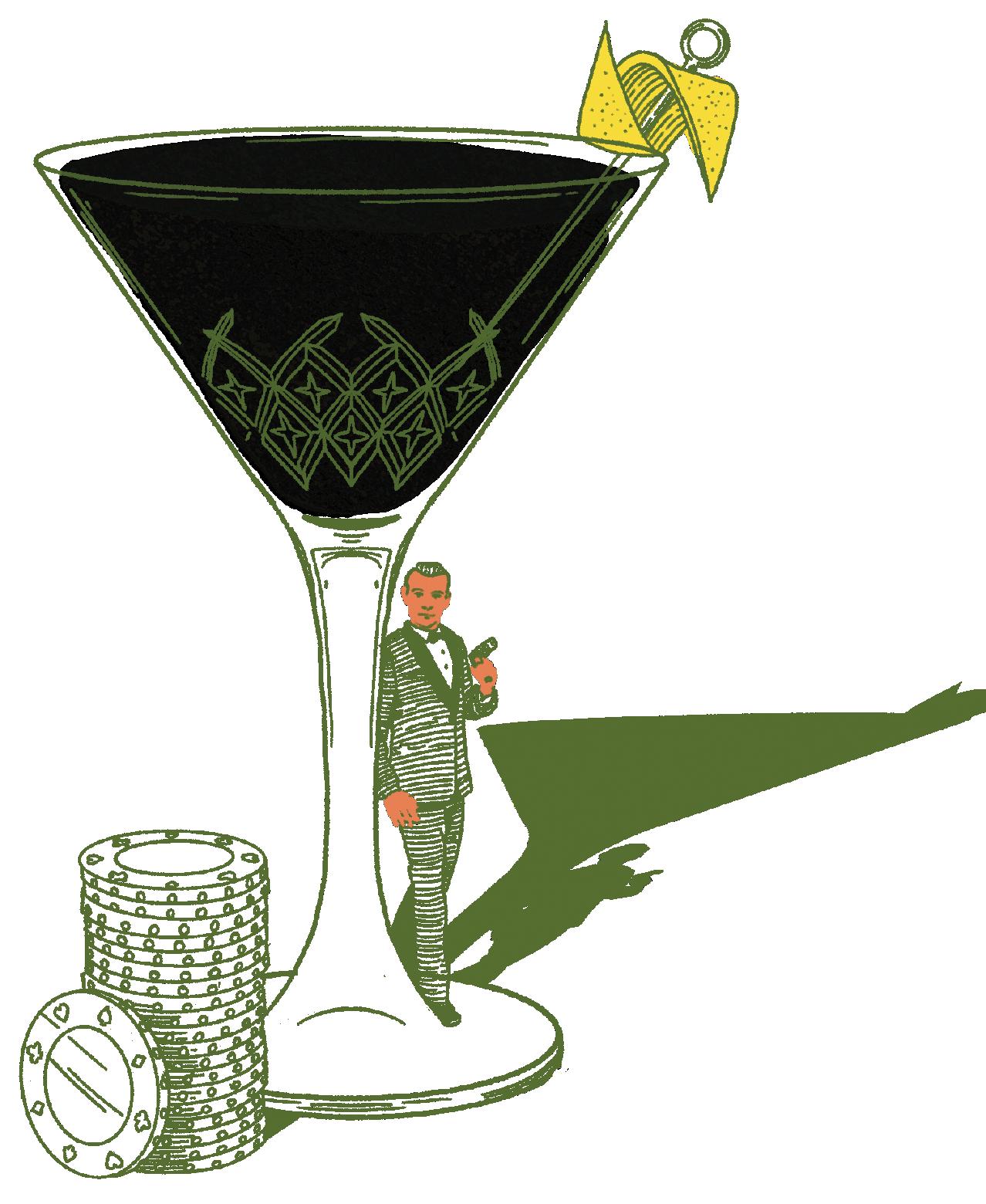
Introduction
Cocktails and mixed drinks have been a part of drinking culture for a long time. Not content merely to ferment beverages on their own, people have been blending various spirits with other ingredients, probably all the way back to the beginning of civilization. In earlier times, such mixes were often used as medicines, being combinations of alcohol with various herbs, spices, and so on. These were not necessarily meant to be enjoyed on an everyday basis, but had specific uses. Indeed, some early medical texts warn about taking these curatives if you don’t really need to!
But that probably didn’t stop anyone from trying out their own blends at home, assuming they could get their hands on the ingredients. The mixing of alcoholic drinks with other alcoholic drinks, or with nonalcoholic beverages, seems to have taken hold in Europe by the sixteenth century, but it could well have started much earlier. By the nineteenth century, the imbibing of mixed drinks was all the rage, at least in certain circles. Writers of all kinds loved penning odes to their favorite concoctions, or at least including them in their tales, so that their characters could enjoy them, too. And many of these works became classics of modern literature.
In case you’re wondering, the word “cocktail” has several possible origins:
It might come from a mispronunciation of coquetier, the French word for eggcup. In New Orleans, an eighteenth-century apothecary named Antoine Amédée Peychaud, who invented his own bitters, was said to have served said bitters with brandy in an eggcup. Customers would drink his “cocktays” for their health.
Or, it might come from the practice of tavern owners mixing the leftovers and dregs (called the tailings) of their barrels into one (possibly unpleasant) drink. They would then sell these mixed drinks, maybe at a discount. The taps of the barrels were sometimes called “cocks.” Thus, you would be drinking the tailings from the barrel’s cock (no immature laughing, please!).
Also, it might come from the seventeenth-century term cocktail, which described an animal, such as a horse, that had a rooster-like tail. This was mainly true for horses with docked tails, ones used for pulling coaches and such. But racehorses didn’t normally have docked tails, so any horses that did have such tails would have stood out on a racetrack because they’d been changed or visibly altered. Given how much horse racing fans like to drink, the theory is that the term entered drinking nomenclature to describe a drink that had been altered, or spruced up. This one seems like a bit of a stretch, it must be said.
Any or none of these theories might be the word’s true origin, but regardless, it was already in use by the early nineteenth century and has remained so ever since.
This little book is a compendium of literary references to cocktails and other mixed drinks, beginning in Ancient Egypt and continuing into the
twenty-first century. Then there is a shorter section of some of the favorite mixed drinks of well-known authors, things that they might have enjoyed sipping while creating their masterworks. While some of the earliest drinks mentioned are not “true” cocktails as we think of them today, they show that the concept of mixing various ingredients with alcohol goes back a very long way. There are recipes for each drink, so that you can try them out, if you wish.
But always remember: it’s a sad reality that many authors drank entirely too much alcohol, drastically dimming their brilliance and cutting their lives tragically short because of their dependence on liquid inspiration. It should go without saying that while these classic and not-so-familiar recipes might be enticing, please drink responsibly and in moderation.
In the vast expanse of the world’s literature, there is a wealth of literary references to drinks of all kinds, and this book supplies only a short introduction to them. Perhaps it will also inspire you to seek out some of these masterpieces, and maybe enjoy reading them with a good mixed drink.

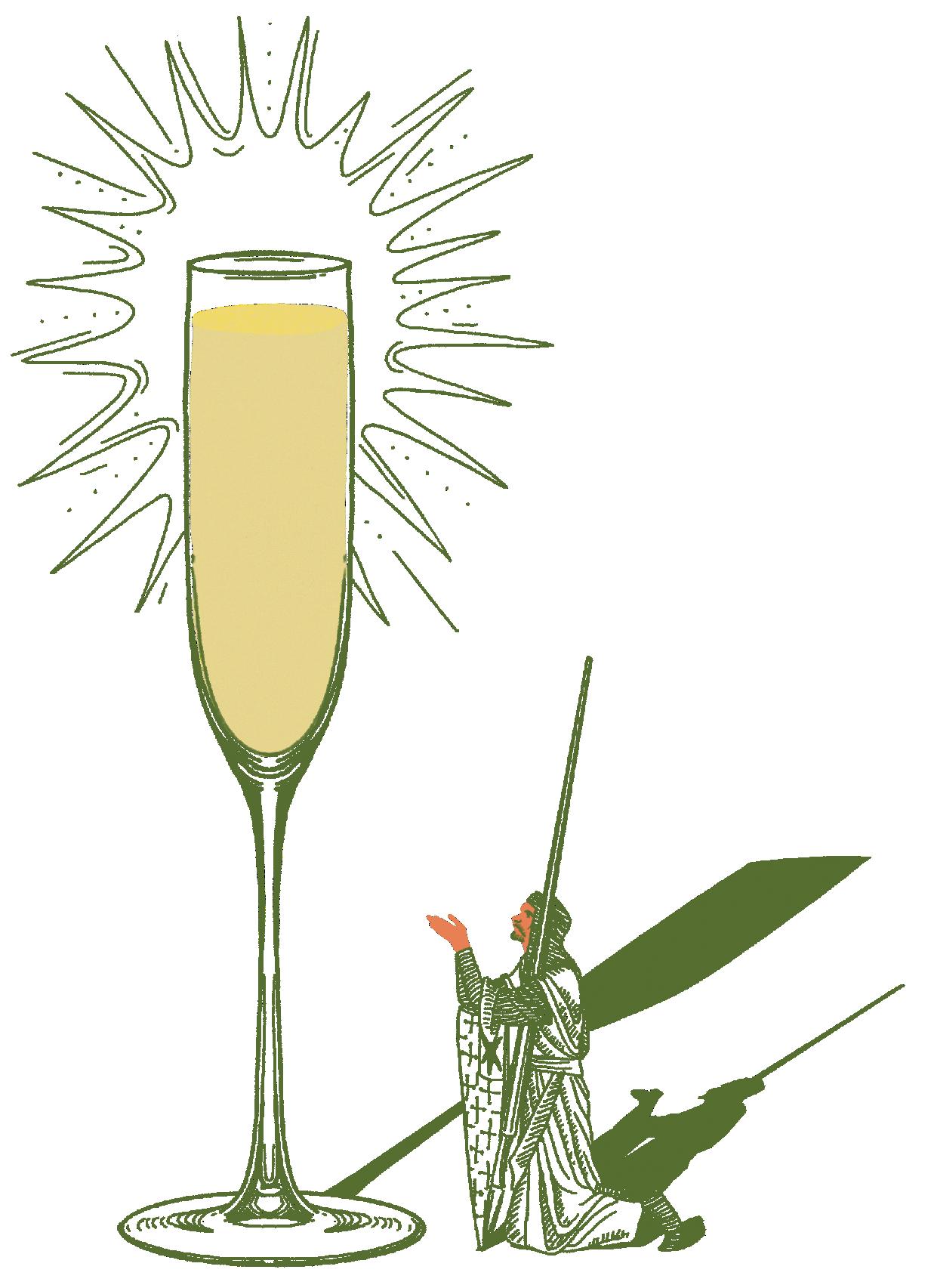
The Ancient & Early Modern World
The ancient world didn’t have cocktails per se, but people all around the Mediterranean were fond of drinking wine and other beverages with other ingredients added in: sugar, honey, herbs, spices, and so on.
And, as we’ve noted, these early mixed drinks were just as often drunk for medicinal purposes as they were for enjoyment, either with food or on their own. Sometimes people were advised not to drink too much if they had no ailments! But for the modern drinker, any of these should be perfectly enjoyable. They would also be excellent options for parties and other celebrations, especially if you’re going for a specific theme.
Wine Infused with Mint, Thyme & Sage
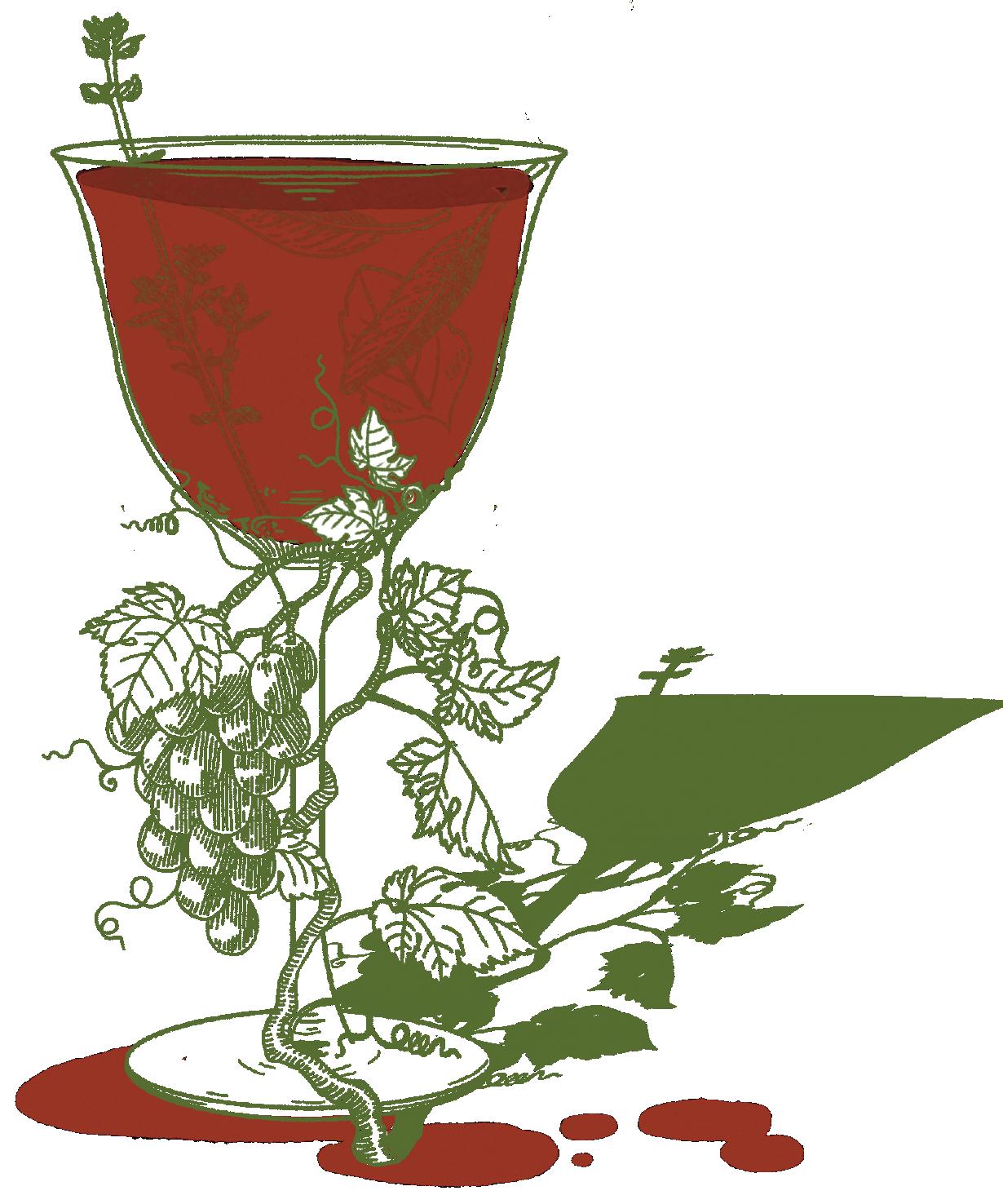

From the Tomb of Scorpion I, c. 3150 BCE

5 fresh mint leaves
2 sprigs of fresh thyme
3 fresh sage leaves 1 part wine
Place the herbs and wine in a mixing glass and muddle.
Let the mixture steep for 1 to 2 hours at room temperature for a quick infusion, or refrigerate for anywhere from 4 hours to overnight.
Strain into a Nick & Nora glass and drink within 2 days.
[Wine is] the blood of those who had once battled against the gods and from whom, when they had fallen and had become commingled with the earth, they believed vines to have sprung.
—Plutarch, Moralia , first century CE
Despite that rather gruesome origin story regarding wine, the Egyptian upper classes were fond of the drink, while simple beers were the favored alcohol of the workers and servants. Wine was related to the blood of Osiris, the god of resurrection, and had an important place in Ancient Egyptian religious rituals, as well as in medicines. It seems more often to have been red, though references to white wines do appear at times.
This “recipe” is based on analysis of some jars found inside the “Scorpion King’s” tomb, which show remnants of wine infused with herbs, including mint, thyme, and sage. There are other ingredients, but a simple infusion using just these herbs in a white or red wine will produce a lovely and refreshing drink, perfect for a summer’s day.
Conditum Paradoxum (Surprise Wine)
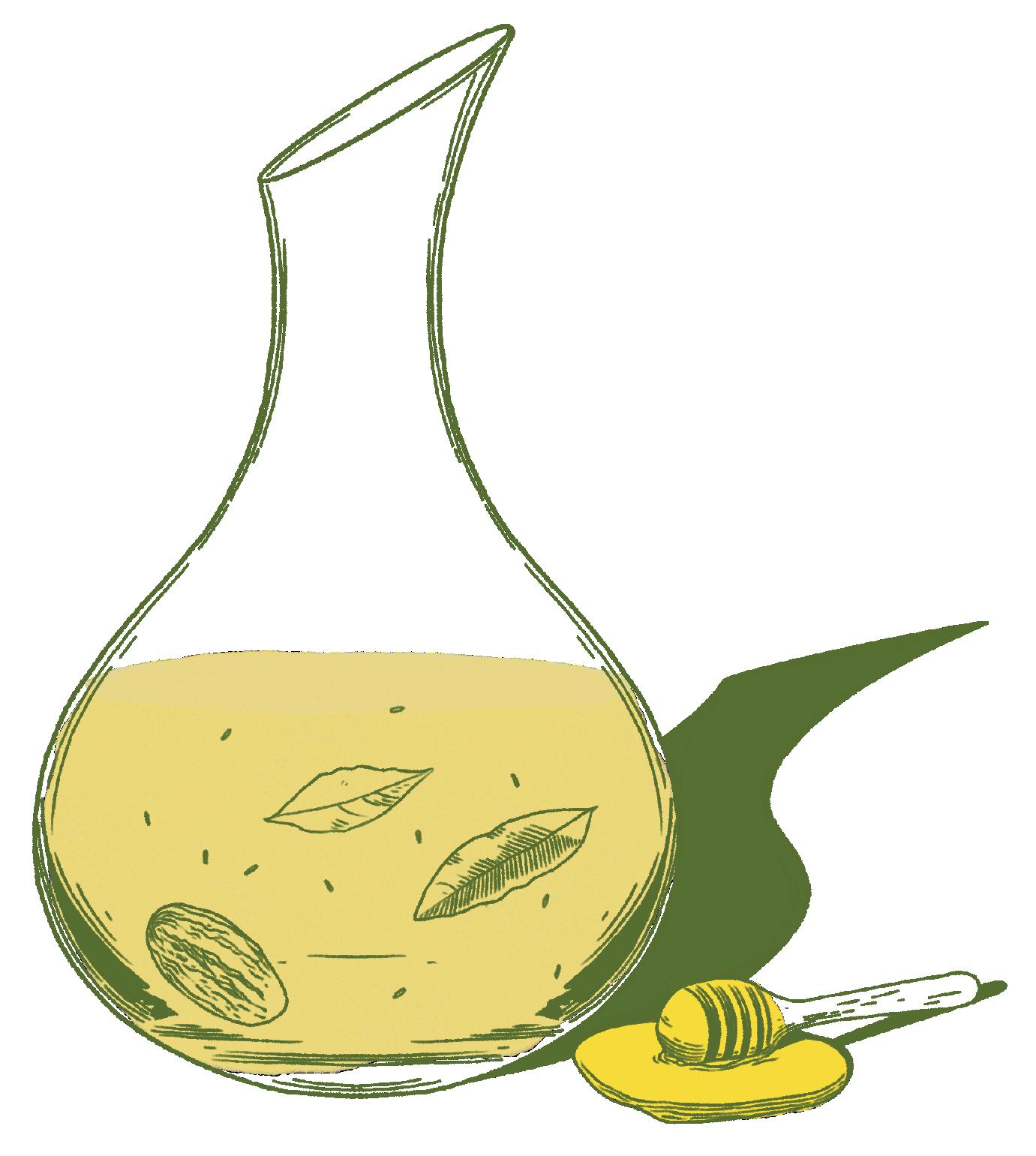

Apicius, Anonymous, fifth century CE

1 (750 ml) bottle of wine
1 cup honey
1 date
1 teaspoon black pepper
½ teaspoon fennel seeds
2 bay leaves
Pinch of saffron threads
Bring 75 ml (about 1/3 cup) of wine and the honey to a boil in a saucepan, stirring often until the honey has emulsified.
Reduce the heat so that the mixture simmers and stir in the remaining honey and the rest of the ingredients. Cover the pan and simmer for 10 minutes.
Strain the mixture into a pitcher through a fine-mesh sieve lined with a coffee filter.
Add the remaining wine to the strained mixture and stir to combine. Serve chilled.
This excellent spiced wine.
Apicius is a book of cookery of all kinds, remarkable for its age. The author is anonymous, though that hasn’t stopped people from guessing who it might have been. It’s possible that some form of the book was written in the first century, though the surviving version seems to date from the fifth century.
This wine would be perfect for a celebration, such as Saturnalia (the big Roman holiday in December). Red or white wine will work for this recipe, though white might be preferable, since it is best chilled, and white was the most common wine drunk in Roman times.
Rose Petal Wine
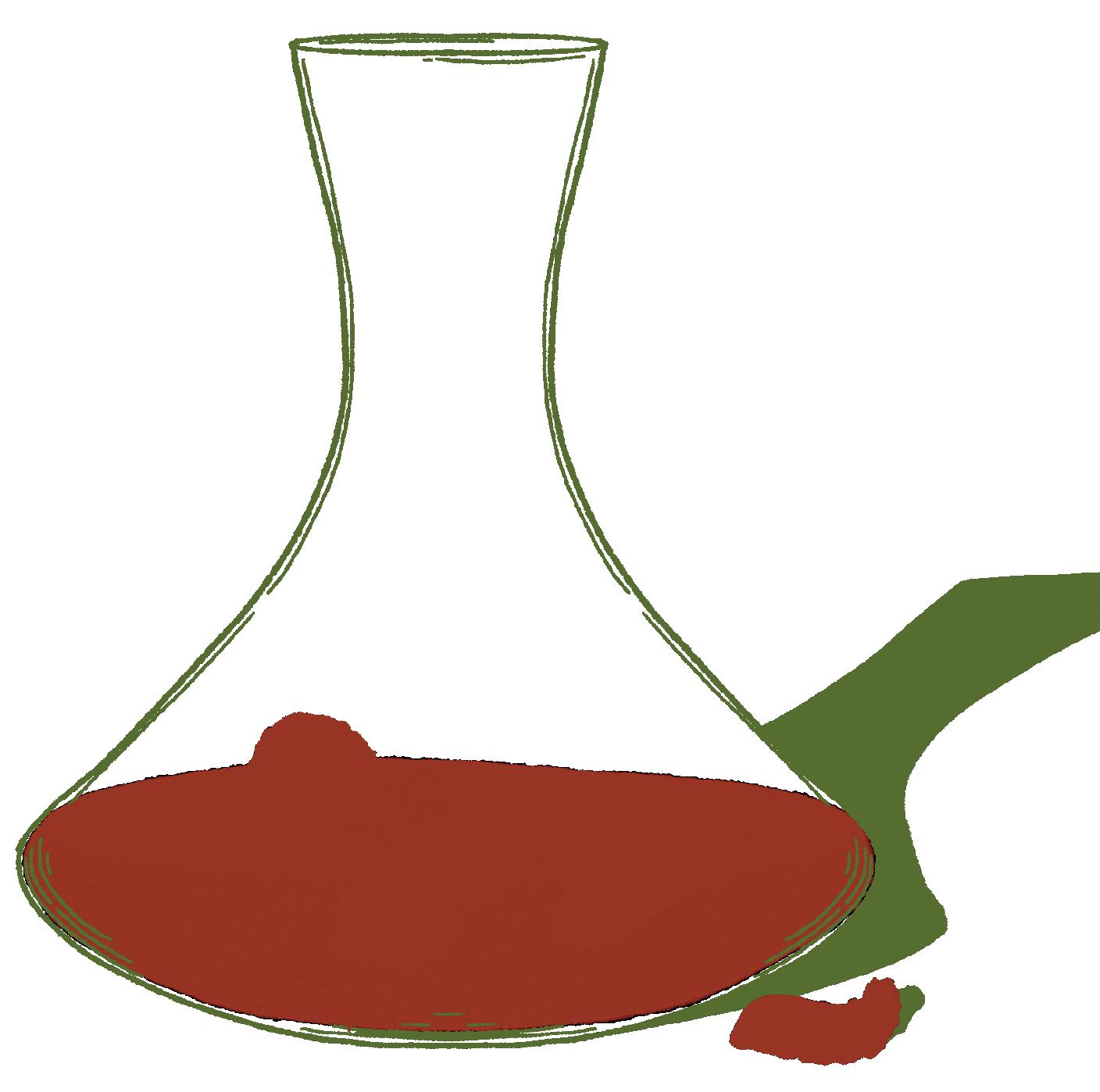

Apicius, Anonymous, fifth century CE

1 (750 ml) bottle of wine
1½ cups rose petals, plus more for garnish
Honey, to taste
Pour the wine into a large pitcher.
Place one-third of the rose petals on a piece of cheesecloth.
Tie the cheesecloth closed and submerge it in the wine. Let the mixture steep in the refrigerator for a week.
After the week has passed, remove the sachet from the wine and repeat Steps 2 and 3 with another one-third of the rose petals.
Repeat Step 4 and then repeat Steps 2 and 3 with the remaining rose petals.
Remove the sachet from the wine, stir in honey to taste, and garnish each serving with additional rose petals.
Another delicious and very simple mix from the Apicius manuscript, this Roman serve is not a modern rosé, but rather wine literally infused with rose petals. The recipe is simple and again would likely work better with a dry white wine. You can sweeten the wine to taste with sugar or honey (as indicated in the original instructions), or leave it dry to let the flavors of the rose petals really come through.
Piment (Spiced
White Wine)
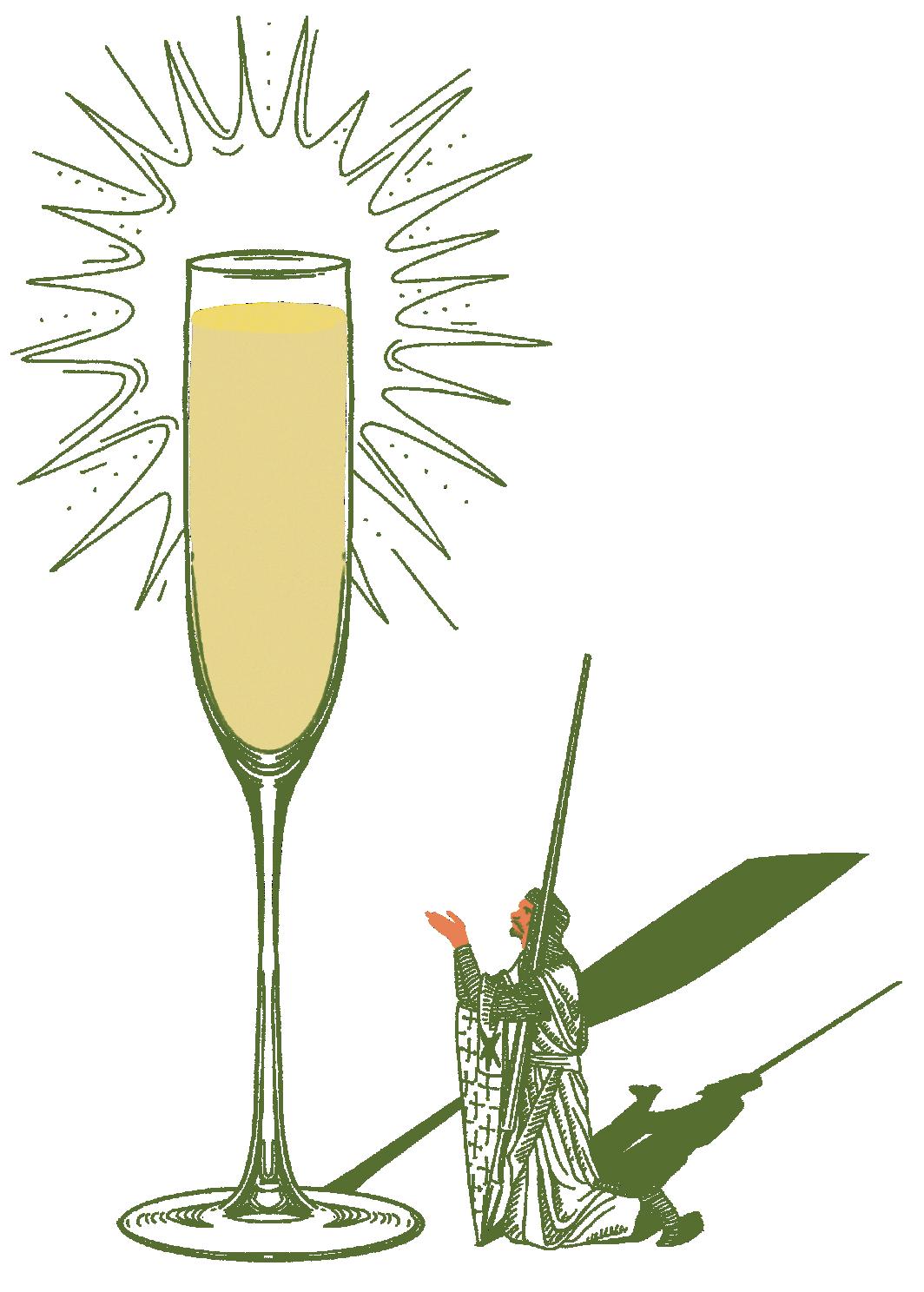

Perceval, the Story of the Grail
Written by Chrétien de Troyes, late twelfth century

1 (750 ml) bottle of dry white wine
Fresh herbs of your choosing
Combine the wine and herbs in a saucepan and bring to a boil. Reduce the heat and simmer for 5 minutes.
Remove the pan from heat and let the wine cool completely.
Pour each individual serving into a cocktail shaker, fill it two-thirds of the way with ice, and shake until chilled.
Strain into a Champagne flute or coupe and enjoy.
And spiced wine they drank; piment, Without sweet honey or pepper blent;
Descriptions of banquets in medieval texts can be lengthy, depicting every sumptuous dish in detail. This late twelfth-century French poem is no exception, though it’s mainly concerned with the quest for the Holy Grail, that most famous of objects from the King Arthur tales. Here, we have a fantastic feast accompanied by a spiced wine known as piment, a preparation that probably dates back to Ancient Rome. The poem here tells us that this particular piment was not blended with honey or black pepper, meaning that other spices were used. White or red wine was used to make piment; this recipe calls for a dry white wine.
Hippocras (Mulled Red Wine)
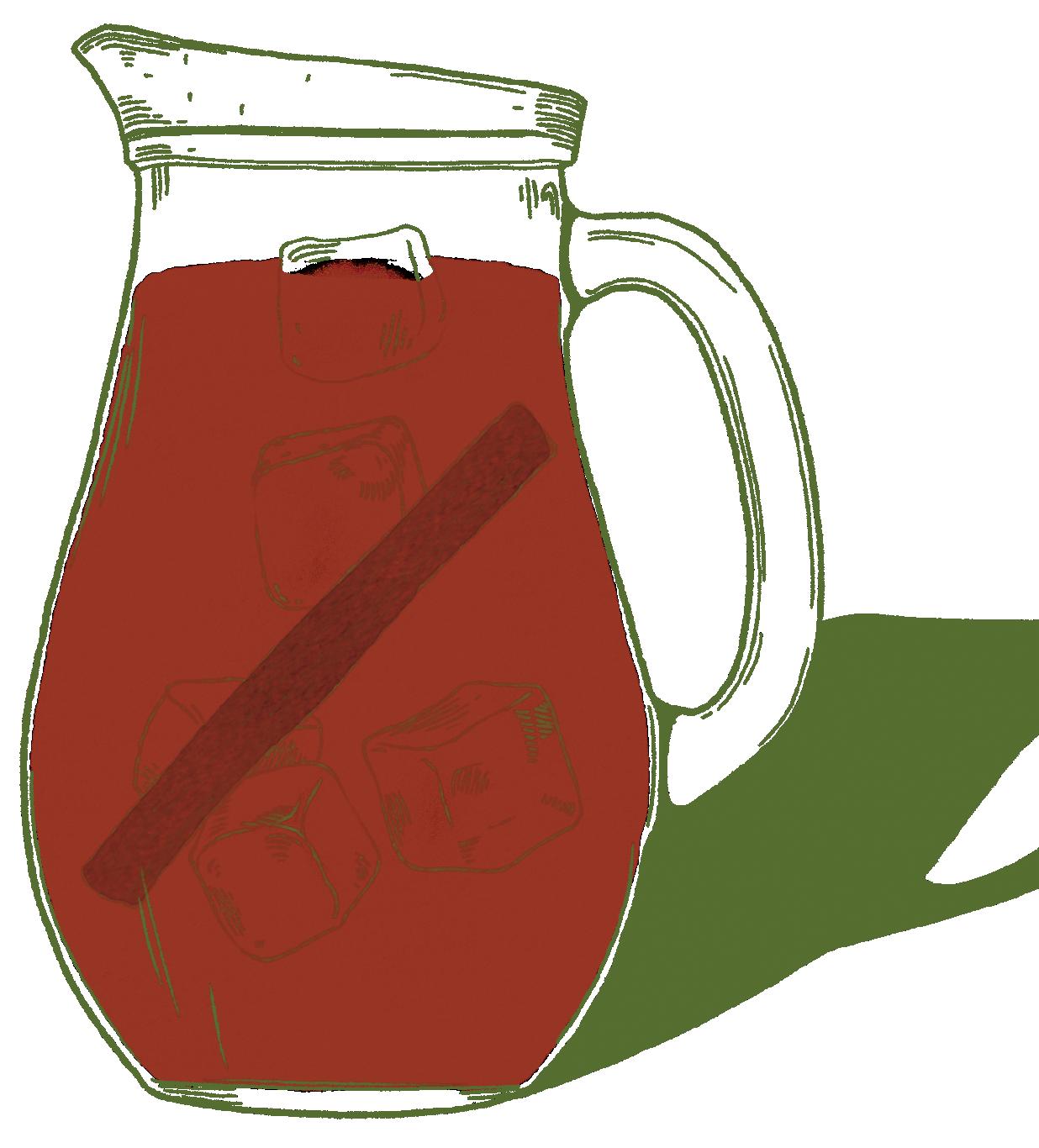

This Is the Boke of Cokery
Anonymous, printed by Richard Pynson, 1500

4 cups red wine
1 oz. cinnamon sticks
½ oz. fresh ginger, chopped
¼ oz. grains of paradise
¼ oz. long pepper
½ lb. sugar
Place all of the ingredients in a large pitcher or container, cover it, and chill it in the refrigerator for 4 or more hours.
When ready to serve, strain the mixture into a clean pitcher. Add ice, stir until chilled, and enjoy.
To a quart of red wine, add an ounce of cinnamon and half an ounce of ginger; a quarter of an ounce of grains of paradise and long pepper, and half a pound of sugar. Bruise all this, not too small, and strain the wine through a cloth bag.
Now, cookbooks aren’t exactly “literature,” but they are plentiful in England and beyond from the fourteenth century onward, and they provide a fascinating glimpse into the foods of the upper classes (and sometimes more commonly eaten foods, as well), some of which look very tasty, while other might leave your stomach churning. Recipes for spiced wine are common in these collections. Hippocras (one of its many spellings) is basically a mulled red wine with sugar, cinnamon, and other delectable ingredients. The recipe given in the book is easy to follow and many modern historical cookery experts have used its example to fashion their own versions.
Lamb’s Wool
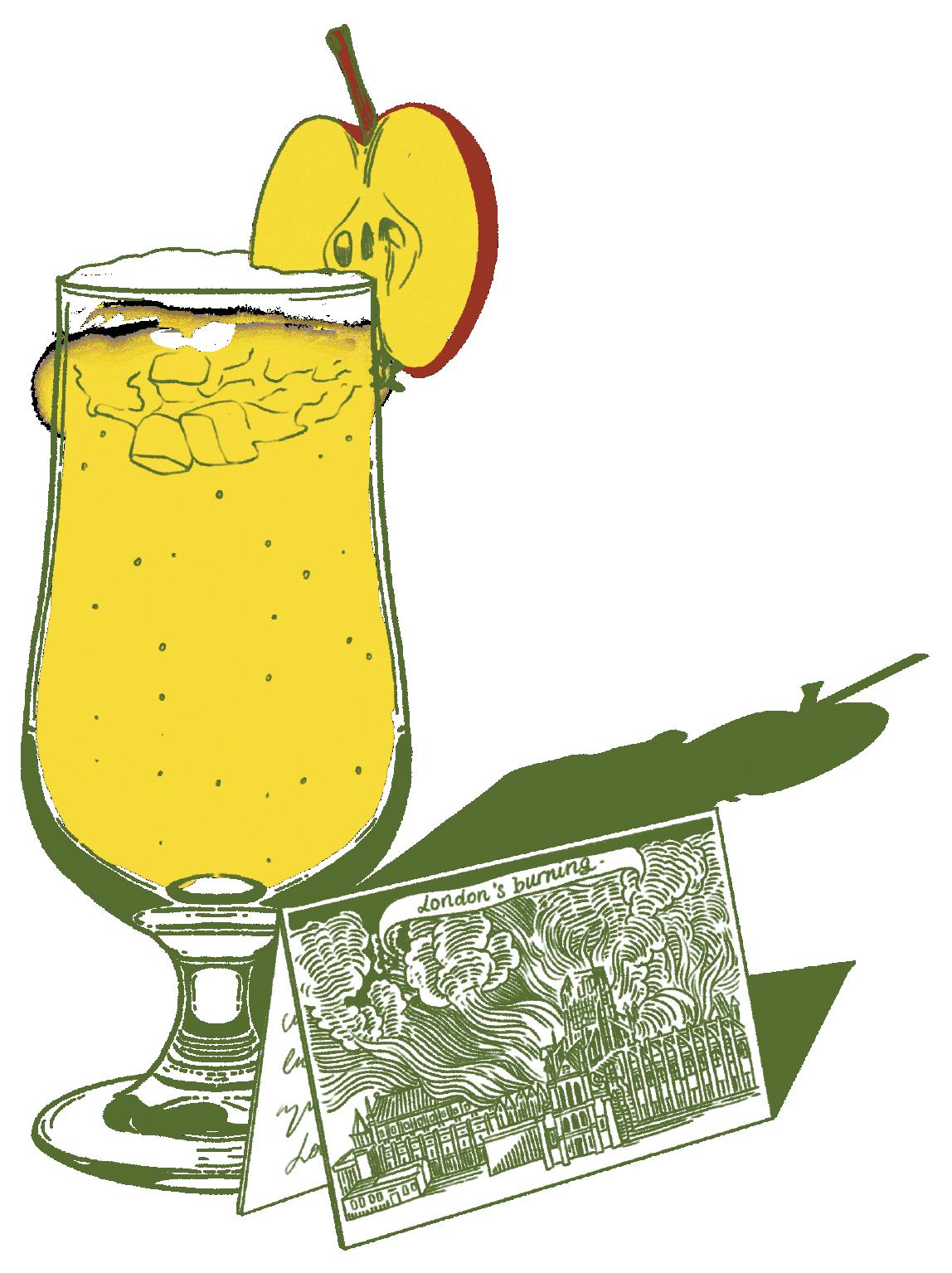

The Diary of Samuel Pepys, Samuel Pepys, 1659-69
1 part ale
1 cup sugar

1 part roasted apple pulp
Dash of nutmeg
Place the ale and sugar in a glass and stir to combine.
Pour the roasted apple pulp on top of the cocktail, top with a dusting of nutmeg, and stir to combine.
We got well home… Being come home, we to cards, till two in the morning, and drinking lamb’s-wool [A beverage consisting of ale mixed with sugar, nutmeg, and the pulp of roasted apples]. November 9th, 1666
The Diary of Samuel Pepys offers a fascinating glimpse into daily life in mid-seventeenth century England, during the Restoration of the monarchy, when King Charles II was on the throne. This entry describes a rather harrowing evening, when Pepys and his friends witnessed a fire that, luckily, was put out. It had only been a few months since a terrible fire had ravaged much of London, so no doubt they were thankful, and after getting home, they partook of this comforting beverage and cards to relax.

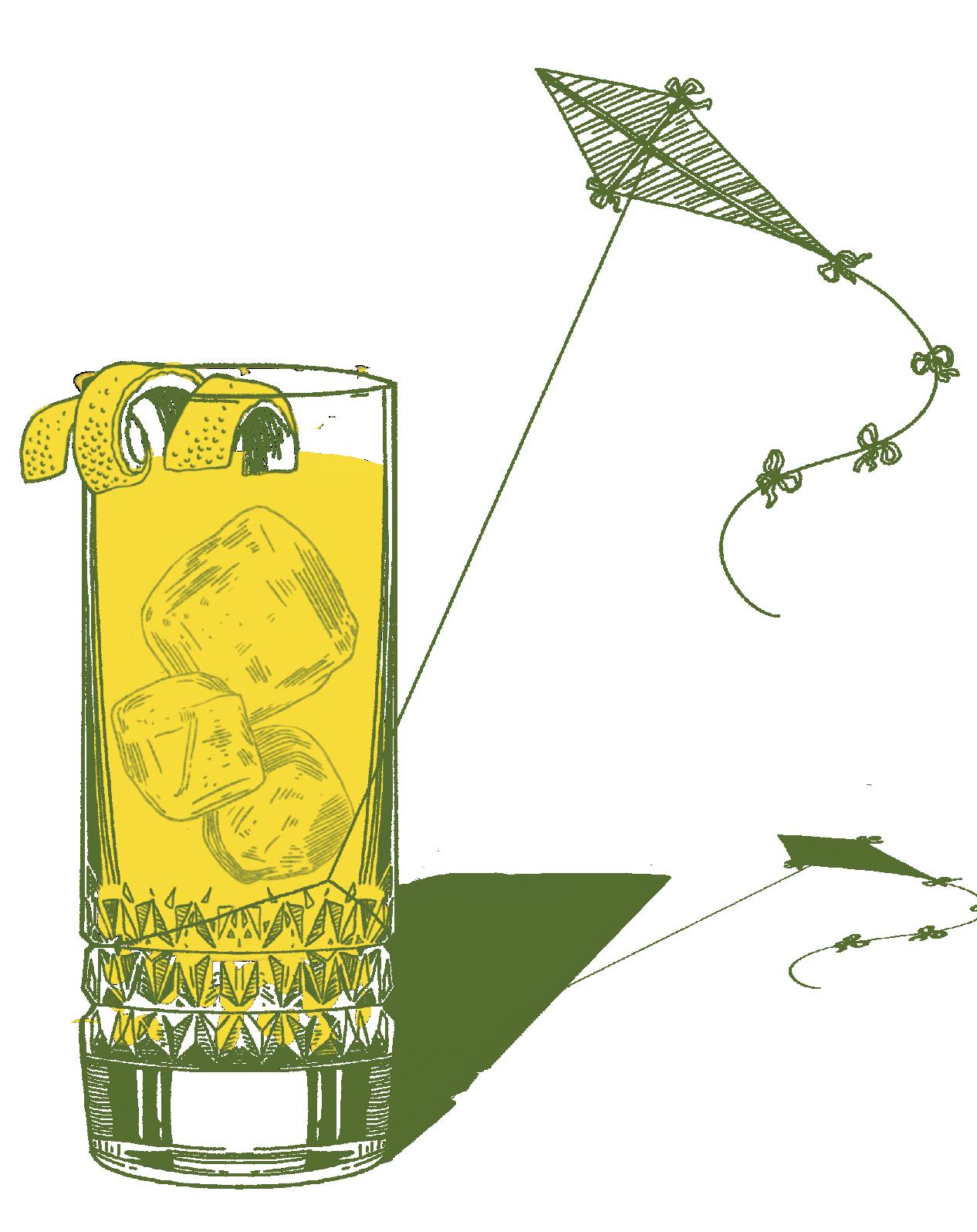
The Nineteenth Century
The nineteenth century was the time when mixed drinks began to come into their own as beverages enjoyable in their own right, without having to use the excuse of “medicinal purposes” to justify one’s favorite evening tipple. Mentions of mixed drinks start to show up in a lot of novels and short stories, too. Here is a generous sampling of mixed drinks and literary works you might not know, but are worthy of your time.
Stone-Fence
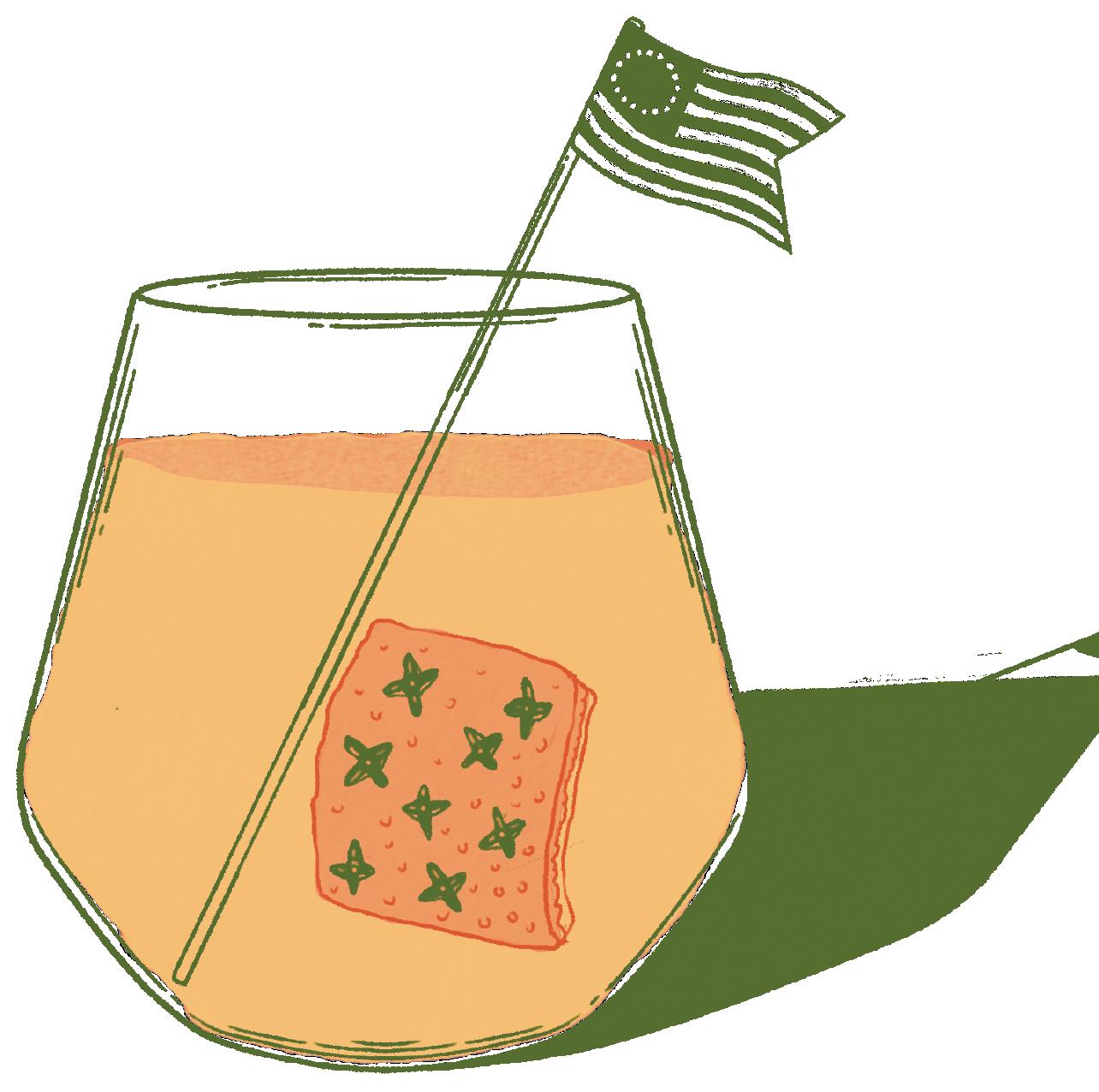

A History of New York, Washington Irving, 1809
8 cups apple cider
4 cups bourbon
5 cinnamon sticks

3 orange peels
30 to 40 whole cloves
Place the apple cider, bourbon, and cinnamon sticks in a slow cooker and cook on low for 2 hours, making sure the mixture does not come to a boil.
Cut the orange peels into rectangles and press the cloves into them.
Garnish each serving of the cocktail with a clove-studded square of orange peel and enjoy.
They lay claim to be the first inventors of those recondite beverages, cock-tail, stone-fence, and sherry-cobbler.
In this passage, Irving’s satirical work makes fun of the colonists of Maryland, or “Merryland,” claiming that they were always making merry with alcohol, hence the name. And if they were the first to produce these cocktails, as Irving claims, no wonder they were making merry! In addition, he says: “They were, moreover, great horse-racers and cock-fighters, mighty wrestlers and jumpers, and enormous consumers of hoe-cake and bacon.”
The Stone-Fence is most commonly a mixture of apple cider with spirits (usually bourbon, brandy, or rum), and a dash of bitters. It was apparently enjoyed in colonial America and makes a great autumnal cocktail. Wrestling and jumping are optional.
